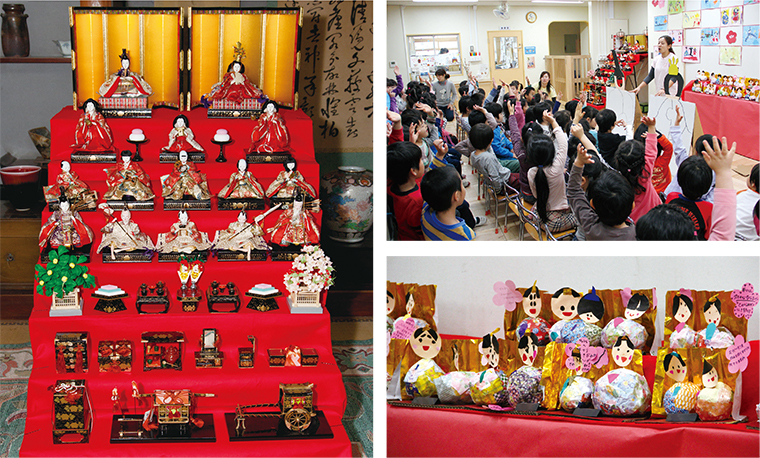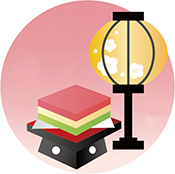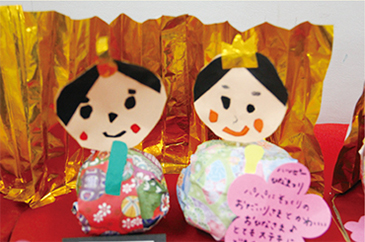
Experiencing the Traditions of the Dolls’ Festival |
| The March 3 Dolls’ Festival is known by one of its two names: hina matsuri or momo no sekku (a seasonal festival). It is an old Japanese tradition for expressing hope for the healthy growth of girls. Families with girls celebrate this day by displaying hina dolls, eating hina arare (colorful sweetened puffed rice) and hishimochi (red, white, and green lozengeshaped rice cakes), drinking shirozake (sweet white sake) and displaying peach blossoms. Nursery schools in Shinagawa City also hold Dolls’ Festival events each March 3. | |
|
In 2015, children at the Hiratsuka Nursery School created a multi-tiered display of paper hina dolls. Children aged three to five also looked a full traditional seven-tier display while listening to their nursery school teachers talk about the origins of the different dolls displayed, such as the five court musician dolls and the three court lady dolls. All the children sang a children’s song about the Dolls’ Festival. Both girls and boys enjoyed this traditional Japanese cultural event together. Shinagawa City nursery schools incorporate such seasonal events and special traditional dishes into their programs throughout the year for children to experience different aspects of traditional Japanese culture. |
 |
| 【Dolls’Festival and hina dolls】 The dolls displayed for Dolls’ Festival supposedly originated in the Heian era as a kind of doll play among young girls of the nobility. At the time, there was a custom of taking paper dolls and setting them afloat on water, known as nagashi bina, for the purposes of “purification”; the two became associated and the March 3 Dolls’ Festival became an activity aimed at protecting children from accidents and illness.
|
 Copyright (C) 2016 Shinagawa City. All rights reserved. |
